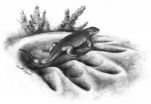(Press-News.org) In a new study in patients with osteoarthritis (OA) of the knee, at 12 months, total femorotibial cartilage thickness loss was reduced in sprifermin (recombinant human fibroblast growth factor 18)-treated knees compared to placebo-treated knees, with effects being significant in the lateral femorotibial compartment but not in the central femorotibial compartment.
Results published in Arthritis & Rheumatology, a journal of the American College of Rheumatology (ACR), showed that sprifermin dosed at 100µg reduced loss of cartilage thickness and volume in the total femorotibial joint and in the lateral knee compartment (outside of the knee).
The 2010 Global Burden of Disease Study estimates that OA affects 150 million people around the world, with the ACR reporting 27 million Americans over 25 years of age diagnosed with the disease. While OA is the most common cause of physical disability in older adults, studies suggest that the average age at diagnosis is 55 years. No medication or alternative treatment (glucosamine, chondroitin) has shown positive effects on preventing or reversing the structural changes of joint damage caused by OA.
"Currently, no structure-modifying treatment has been approved by U.S. or European Union regulatory bodies," says lead researcher L.S. Lohmander, M.D., Ph.D., from Lund University in Sweden. "Our trial investigates the safety and efficacy of sprifermin in preventing loss of cartilage due to OA in the knee."
This proof-of-concept double-blind trial recruited 192 knee OA patients who were randomized to single-ascending doses intra-articular injection of sprifermin or placebo (n= 24) or to multiple-ascending doses of sprifermin or placebo (n= 168). Doses of the drug were administered at 10, 30, and 100μg. Researchers measured cartilage thickness at 6 and 12 months using magnetic resonance imaging (MRI); joint space width by x-ray, and pain was scored using the Western Ontario McMaster Universities (WOMAC) OA index.
Of the patients recruited, 180 completed the trial and 168 were evaluated for cartilage changes. At 12 months, researchers found no change in the thickness of cartilage in the central medial femorotibial compartment in patients injected with sprifermin. However, a reduction in loss of total and lateral femorotibial cartilage thickness and volume was noted in patients injected with 100μg of sprifermin versus placebo. Narrowing of the joint space width was also reduced in the lateral femorotibial compartment for OA patients who received the same dose. The WOMAC pain score improved in all patients, with less improvement shown at 12 months for patients who received 100μg sprifermin compared to placebo.
Dr. Lohmander concludes, "While our trial found no reduction in cartilage thickness in the central femorotibial compartment among subjects in the treatment group, dose-dependent reductions in structural changes were found in participants treated with sprifermin." The authors found no safety or injection-site issues with sprifermin. Additional clinical studies will be needed to replicate these findings and confirm the optimal dosing.
INFORMATION:
This clinical trial (.gov identification: NCT01033994) was sponsored by Merck Serono S.A. located in Geneva, Switzerland.
This study is published in Arthritis & Rheumatology. Media wishing to receive a PDF of this article may contact sciencenewsroom@wiley.com.
Full citation: "Intra-articular Sprifermin (Recombinant Human Fibroblast Growth Factor 18) in Knee Osteoarthritis: Randomized, Double-blind, Placebo-controlled Trial." L. Stefan Lohmander, Scarlett Hellot, Don Dreher, Eduard F.W. Krantz, Dawie S. Kruger, Ali Guermazi and Felix Eckstein. Arthritis & Rheumatology; Published Online: April 17, 2014 (DOI: 10.1002/art.38614).
URL Upon Publication: http://doi.wiley.com/10.1002/art.38614
Author Contact: To arrange an interview with Dr. Lohmander, please contact Katrin Stahl with Lund University at katrin.stahl@med.lu.se.
About the Journal
Arthritis & Rheumatology is an official journal of the American College of Rheumatology (ACR) and covers all aspects of inflammatory disease. The American College of Rheumatology is the professional organization whose members share a dedication to healing, preventing disability, and curing the more than 100 types of arthritis and related disabling and sometimes fatal disorders of the joints, muscles, and bones. Members include practicing physicians, research scientists, nurses, physical and occupational therapists, psychologists, and social workers. The journal is published by Wiley on behalf of the ACR. For more information, please visit http://wileyonlinelibrary.com/journal/art.
About Wiley
Wiley is a global provider of content-enabled solutions that improve outcomes in research, education, and professional practice. Our core businesses produce scientific, technical, medical, and scholarly journals, reference works, books, database services, and advertising; professional books, subscription products, certification and training services and online applications; and education content and services including integrated online teaching and learning resources for undergraduate and graduate students and lifelong learners.
Founded in 1807, John Wiley & Sons, Inc. (NYSE: JWa, JWb), has been a valued source of information and understanding for more than 200 years, helping people around the world meet their needs and fulfill their aspirations. Wiley and its acquired companies have published the works of more than 450 Nobel laureates in all categories: Literature, Economics, Physiology or Medicine, Physics, Chemistry, and Peace. Wiley's global headquarters are located in Hoboken, New Jersey, with operations in the U.S., Europe, Asia, Canada, and Australia. The Company's website can be accessed at http://www.wiley.com.
Sprifermin offers benefit for cartilage loss from knee osteoarthritis
2014-04-17
ELSE PRESS RELEASES FROM THIS DATE:
Distracted driving among teens threatens public health and safety
2014-04-17
Philadelphia, PA, April 17, 2014 – Motor vehicle crashes rank as the leading cause of teen deaths and in 2008, 16% of all distraction-related fatal automobile crashes involved drivers under 20 years of age. These grim statistics, coupled with an increasing nationwide awareness of the dangers of distracted driving for all ages, prompted the publication of an important supplement to the Journal of Adolescent Health that explores the causes of distracted driving and offers practical recommendations to reduce the incidence of distracted driving among teens.
"Although public ...
Creative activities outside work can improve job performance
2014-04-17
SAN FRANCISCO -- Employees who pursue creative activities outside of work may find that these activities boost their performance on the job, according to a new study by San Francisco State University organizational psychologist Kevin Eschleman and colleagues.
Creative pursuits away from work seem to have a direct effect on factors such as creative problem solving and helping others while on the job, said Eschleman, an assistant professor of psychology.
The study examined whether creative activity might have an indirect impact on employees' performance by providing them ...
Research shows that bacteria survive longer in contact lens cleaning solution than thought
2014-04-17
Each year in the UK, bacterial infections cause around 6,000 cases of a severe eye condition known as microbial keratitis – an inflammation and ulceration of the cornea that can lead to loss of vision. The use of contact lenses has been identified as a particular risk factor for microbial keratitis. New research, presented today at the Society for General Microbiology Annual Conference in Liverpool, shows that a bacterial strain associated with more severe infections shows enhanced resistance to a common contact lens disinfectant solution.
Researchers from The University ...
Simplicity is key to co-operative robots
2014-04-17
A way of making hundreds - or even thousands - of tiny robots cluster to carry out tasks without using any memory or processing power has been developed by engineers at the University of Sheffield, UK.
The team, working in the Sheffield Centre for Robotics (SCentRo), in the University's Faculty of Engineering, has programmed extremely simple robots that are able to form a dense cluster without the need for complex computation, in a similar way to how a swarm of bees or a flock of birds is able to carry out tasks collectively.
The work, published today [Thursday 17 April ...
At least 1 in 20 adult outpatients misdiagnosed in US every year
2014-04-17
At least one in 20 adults is misdiagnosed in outpatient clinics in the US every year, amounting to 12 million people nationwide, and posing a "substantial patient safety risk," finds research published online in BMJ Quality & Safety.
Half of these errors could be potentially harmful, say the authors, who add that their findings should prompt renewed efforts to monitor and curb the numbers of misdiagnoses.
To date, patient safety improvements have largely focused on hospital stays and issues such as infections, falls, and medication errors, say the authors. But most ...
The Lancet: Changing where a baby is held immediately after birth could lead to improved uptake of procedure that reduces infant iron deficiency
2014-04-17
Changing where a newborn baby is held before its umbilical cord is clamped could lead to improved uptake in hospitals of delayed cord clamping, leading to a decreased risk of iron deficiency in infancy, according to new results published in The Lancet.
Delaying clamping of the umbilical cord until around two minutes after birth allows for blood to pass from the mother's placenta to the baby, and has previously been shown to reduce the risk of iron deficiency in infancy.
However, current recommendations – based on studies conducted 35 years ago – suggest that for effective ...
Chimpanzees prefer firm, stable beds
2014-04-17
Chimpanzees may select a certain type of wood, Ugandan Ironwood, over other options for its firm, stable, and resilient properties to make their bed, according to a study published April 16, 2014 in the open-access journal PLOS ONE by David Samson from the University of Nevada and Kevin Hunt from Indiana University.
Chimpanzees use tree branches to build beds or nests in trees. They select certain tree species to sleep in more frequently than other, but the reason for selecting a particular tree is unclear. To determine whether the physical properties of trees influenced ...
In funk music, rhythmic complexity influences dancing desire
2014-04-17
Rhythmic drum patterns with a balance of rhythmic predictability and complexity may influence our desire to dance and enjoy the music, according to a study published April 16, 2014 in the open-access journal PLOS ONE by Maria Witek from University of Oxford and colleagues from Aarhus University, Denmark and Oxford University.
Many people find themselves unable to resist moving their bodies to the thumping beat of hip-hop, electronic, or funk music, but may feel less desire to dance when listening to a highly syncopated type of music, like free jazz. Researchers interested ...
New species discovery sheds light on herbivore evolution
2014-04-17
A new fossil may provide evidence that large caseid herbivores, the largest known terrestrial vertebrates of their time, evolved from small non-herbivorous members of that group, according to a study published April 16, 2014 in the open-access journal PLOS ONE by Robert Reisz from University of Toronto and Jörg Fröbisch of the Museum für Naturkunde.
The origin and early evolution of vertebrates living on land led to major changes in the structure of terrestrial ecosystems. The first appearance of herbivores played a pivotal role in this transformation, and a newly discovered ...
Research may help doctors predict who gets long-term complications from Lyme disease
2014-04-17
A team of scientists led by Johns Hopkins and Stanford University researchers has laid the groundwork for understanding how variations in immune responses to Lyme disease can contribute to the many different outcomes of this bacterial infection seen in individual patients. A report on the work appears online April 16 in PLOS One.
"Physicians have recognized for many years that Lyme disease is not a uniform disease process and can vary in outcomes," says Mark Soloski, Ph.D., a professor of medicine at the Johns Hopkins University School of Medicine and senior author of ...



